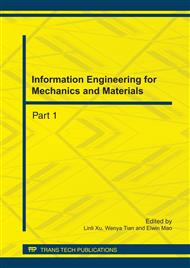p.762
p.767
p.774
p.779
p.783
p.788
p.792
p.797
p.807
Numerical Simulation of Thermodynamic Parameters during Diffusion Combustion for Vehicle Air Heater
Abstract:
The diffusion combustion of the air heater was numerically simulated at different excess air coefficient using Fluent software. The distributions of the temperature, gas flow velocity, and turbulence intensity were present. And the heat flux was calculated. The result showed that the excess air coefficient had a little effect on the maximum combustion temperature distribution. As the excess air coefficient increased, the axial temperature at first increased and then decreased, and in contrast both the total heat flux and radiation heat flux decreased. The radial temperature, velocity and turbulence intensity increased firstly and then decreased at the same operation condition. The measured exhaust temperature increased with time. At 90 second, it was about 250 °C, which showed good agreement with simulation result. This provides theory basis for the reform of the heater.
Info:
Periodical:
Pages:
783-787
Citation:
Online since:
July 2011
Authors:
Keywords:
Price:
Сopyright:
© 2011 Trans Tech Publications Ltd. All Rights Reserved
Share:
Citation:


